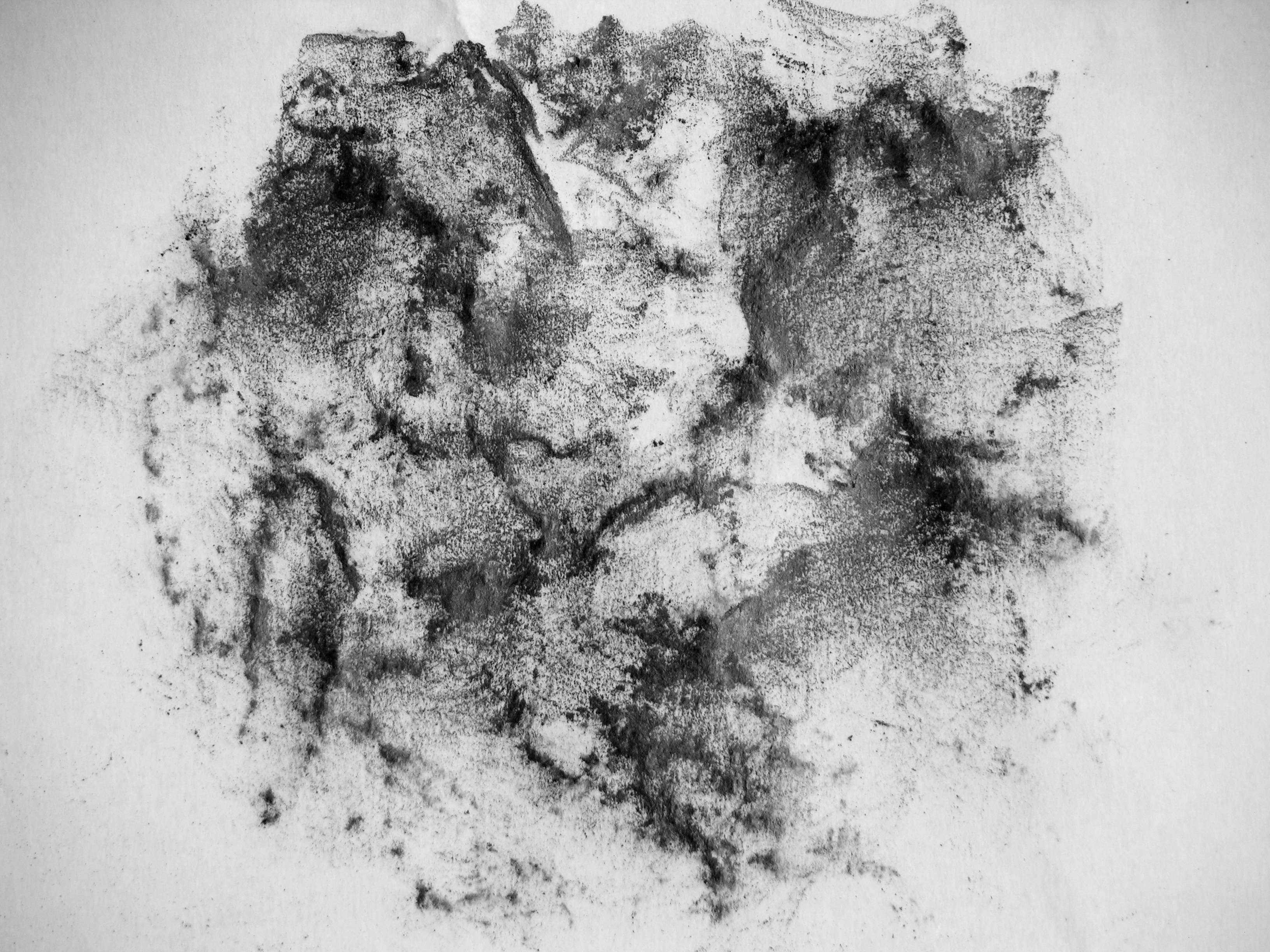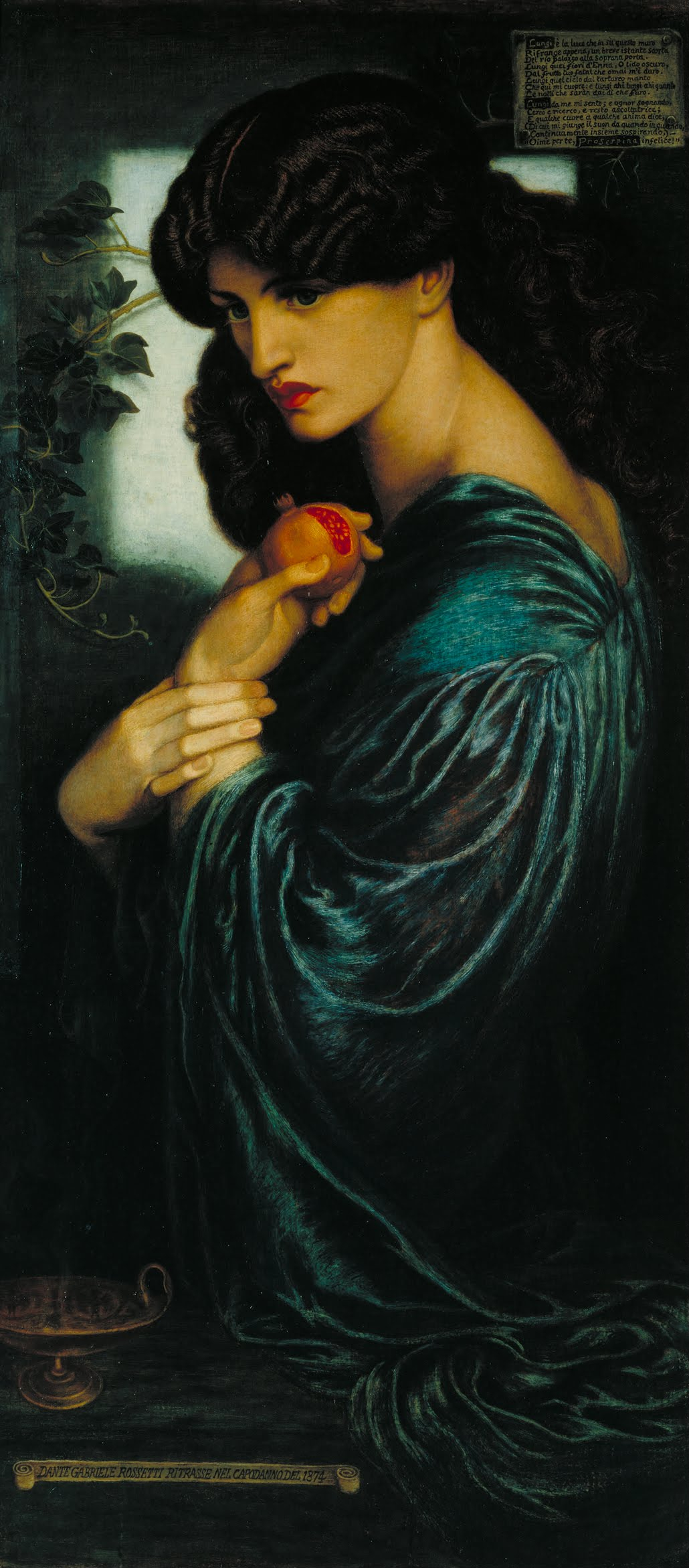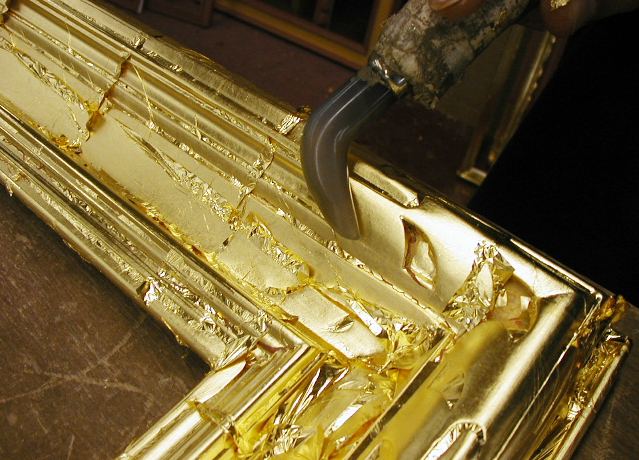|
John Byam Liston Shaw
John Byam Liston Shaw (13 November 1872 – 26 January 1919), commonly known as Byam Shaw, was a British painter, illustrator, designer and teacher. He is not to be confused with his sons, Glen Byam Shaw, actor and theatre director, and James Byam Shaw, art historian and director of Colnaghi's, who both used "Byam Shaw" as a surname. Family John Byam Liston Shaw was the son of John Shaw and his wife, Sophia Alicia Byam Gunthorpe. In 1899, Byam Shaw married the artist, Evelyn Caroline Eunice Pyke-Nott, later known as Evelyn CE Shaw (1870–1959).. Evelyn's sister was Isabel Codrington, another early twentieth century artist. Byam Shaw came from an Ayrshire family of lawyers and clerics. The Ayrshire Shaws were a cadet branch of the Shaws of Tordarroch, chiefs of the Clan Shaw of Tordarroch, Clan Shaw. Byam Shaw's forebears included the two reverend Shaws (father and son) referred to in Robert Burns, Burns' "Twa Herds". Evelyn's family, the Pyke-Notts, were gentry from Swimbridg ... [...More Info...] [...Related Items...] OR: [Wikipedia] [Google] [Baidu] |
Madras
Chennai, also known as Madras ( its official name until 1996), is the capital and largest city of Tamil Nadu, the southernmost state of India. It is located on the Coromandel Coast of the Bay of Bengal. According to the 2011 Indian census, Chennai is the sixth-most-populous city in India and forms the fourth-most-populous urban agglomeration. Incorporated in 1688, the Greater Chennai Corporation is the oldest municipal corporation in India and the second oldest in the world after London. Historically, the region was part of the Chola, Pandya, Pallava and Vijayanagara kingdoms during various eras. The coastal land which then contained the fishing village Madrasapattinam, was purchased by the British East India Company from the Nayak ruler Chennapa Nayaka in the 17th century. The British garrison established the Madras city and port and built Fort St. George, the first British fortress in India. The city was made the winter capital of the Madras Presidency, a ... [...More Info...] [...Related Items...] OR: [Wikipedia] [Google] [Baidu] |
Pastel
A pastel () is an art medium that consists of powdered pigment and a binder (material), binder. It can exist in a variety of forms, including a stick, a square, a pebble, and a pan of color, among other forms. The pigments used in pastels are similar to those used to produce some other colored visual arts media, such as oil paints; the binder is of a neutral hue and low colorfulness, saturation. The color effect of pastels is closer to the natural dry pigments than that of any other process. Pastels have been used by artists since the Renaissance, and gained considerable popularity in the 18th century, when a number of notable artists made pastel their primary medium. An artwork made using pastels is called a pastel (or a pastel drawing or pastel painting). ''Pastel'' used as a verb means to produce an artwork with pastels; as an adjective it means pale in color. Pastel media Pastel sticks or crayons consist of powdered pigment combined with a binder. The exact composition a ... [...More Info...] [...Related Items...] OR: [Wikipedia] [Google] [Baidu] |
Byam Shaw School Of Art
The Byam Shaw School of Art, often known simply as Byam Shaw, was an independent art school in London, England, which specialised in fine art and offered foundation and degree level courses. It was founded in 1910 by Byam Shaw, John Liston Byam Shaw and Rex Vicat Cole. In 2003 it was absorbed by Central Saint Martins, Central Saint Martins College of Arts and Design. History The Byam Shaw was opened in May 1910 by John Liston Byam Shaw and Rex Vicat Cole with the name Byam Shaw and Vicat Cole School of Art. The teaching staff initially consisted of W. Dacres Adams, D. Murray Smith and C. Austin Cooper (artist), Austin Cooper; additional lectures were given by Evelyn Eunice Pyke-Nott (Mrs. Byam Shaw), Kenneth Martin and Percival Silley. Other early members of the staff were Francis Ernest Jackson, Ernest Jackson, who was principal of the school from 1926 to 1940,, and the Pre-Raphaelite, late Pre-Raphaelite painter Eleanor Fortescue-Brickdale. Brian Thomas (church artist), Br ... [...More Info...] [...Related Items...] OR: [Wikipedia] [Google] [Baidu] |
King's College London
King's College London (informally King's or KCL) is a public university, public research university in London, England. King's was established by royal charter in 1829 under the patronage of George IV of the United Kingdom, King George IV and the Arthur Wellesley, 1st Duke of Wellington, Duke of Wellington. In 1836, King's became one of the two founding colleges of the University of London. It is one of the Third-oldest university in England debate, oldest university-level institutions in England. In the late 20th century, King's grew through a series of mergers, including with Queen Elizabeth College and Chelsea College of Science and Technology (1985), the Institute of Psychiatry (1997), the United Medical and Dental Schools of Guy's and St Thomas' Hospitals and the Florence Nightingale School of Nursing and Midwifery (in 1998). King's operates across five main campuses: the historic Strand Campus in central London, three other Thames-side campuses (Guy's, St Thomas' an ... [...More Info...] [...Related Items...] OR: [Wikipedia] [Google] [Baidu] |
Pre-Raphaelites
The Pre-Raphaelite Brotherhood (PRB), later known as the Pre-Raphaelites, was a group of English painters, poets, and art critics, founded in 1848 by William Holman Hunt, John Everett Millais, Dante Gabriel Rossetti, William Michael Rossetti, James Collinson, Frederic George Stephens and Thomas Woolner who formed a seven-member "Brotherhood" partly modelled on the Nazarene movement. The Brotherhood was only ever a loose association and their principles were shared by other artists of the time, including Ford Madox Brown, Arthur Hughes and Marie Spartali Stillman. Later followers of the principles of the Brotherhood included Edward Burne-Jones, William Morris and John William Waterhouse. The group sought a return to the abundant detail, intense colours and complex compositions of Quattrocento Italian art. They rejected what they regarded as the mechanistic approach first adopted by Mannerist artists who succeeded Raphael and Michelangelo. The Brotherhood believed the Cla ... [...More Info...] [...Related Items...] OR: [Wikipedia] [Google] [Baidu] |
Gilding
Gilding is a decorative technique for applying a very thin coating of gold over solid surfaces such as metal (most common), wood, porcelain, or stone. A gilded object is also described as "gilt". Where metal is gilded, the metal below was traditionally silver in the West, to make silver-gilt (or ''vermeil'') objects, but gilt-bronze is commonly used in China, and also called ormolu if it is Western. Methods of gilding include hand application and gluing, typically of gold leaf, chemical gilding, and electroplating, the last also called gold plating. Parcel-gilt (partial gilt) objects are only gilded over part of their surfaces. This may mean that all of the inside, and none of the outside, of a chalice or similar vessel is gilded, or that patterns or images are made up by using a combination of gilt and ungilted areas. Gilding gives an object a gold appearance at a fraction of the cost of creating a solid gold object. In addition, a solid gold piece would often be too soft or to ... [...More Info...] [...Related Items...] OR: [Wikipedia] [Google] [Baidu] |
Dyeing
Dyeing is the application of dyes or pigments on textile materials such as fibers, yarns, and fabrics with the goal of achieving color with desired color fastness. Dyeing is normally done in a special solution containing dyes and particular chemical material. Dye molecules are fixed to the fiber by absorption, diffusion, or bonding with temperature and time being key controlling factors. The bond between the dye molecule and fiber may be strong or weak, depending on the dye used. Dyeing and printing are different applications; in printing, color is applied to a localized area with desired patterns. In dyeing, it is applied to the entire textile. The primary source of dye, historically, has been nature, with the dyes being extracted from plants or animals. Since the mid-19th century, however, humans have produced artificial dyes to achieve a broader range of colors and to render the dyes more stable for washing and general use. Different classes of dyes are used for different ... [...More Info...] [...Related Items...] OR: [Wikipedia] [Google] [Baidu] |
Edward Armitage
Edward Armitage (20 May 1817 – 24 May 1896) was an English Victorian-era painter whose work focused on historical, classical and biblical subjects. Family background Armitage was born in London to a family of wealthy Yorkshire industrialists, the eldest of seven sons of James Armitage (1793–1872) and Anne Elizabeth Armitage née Rhodes (1788–1833), of Farnley Hall (West Yorkshire), Farnley Hall, just south of Leeds, Yorkshire. His great-grandfather James (1730–1803) bought Farnley Hall from Sir Thomas Danby in 1799 and in 1844 four Armitage brothers, including his father James, founded the Farnley Ironworks, utilising the coal, iron and fireclay on their estate. His brother Thomas Armitage, Thomas Rhodes Armitage (1824–1890) founded the Royal National Institute of the Blind. Armitage was the uncle of Robert Armitage (MP), the great-uncle of Robert Selby Armitage, and first cousin twice removed of Edward Armitage (cricketer), Edward Leathley Armitage. Art Training ... [...More Info...] [...Related Items...] OR: [Wikipedia] [Google] [Baidu] |
Royal Academy
The Royal Academy of Arts (RA) is an art institution based in Burlington House in Piccadilly London, England. Founded in 1768, it has a unique position as an independent, privately funded institution led by eminent artists and architects. Its purpose is to promote the creation, enjoyment and appreciation of the fine arts through exhibitions, education and debate. History The origin of the Royal Academy of Arts lies in an attempt in 1755 by members of the Royal Society of Arts, Society for the Encouragement of Arts, Manufactures and Commerce, principally the sculptor Henry Cheere, to found an autonomous academy of arts. Before this, several artists were members of the Society for the Encouragement of Arts, Manufactures and Commerce, including Cheere and William Hogarth, or were involved in small-scale private art academies, such as the St Martin's Lane Academy. Although Cheere's attempt failed, the eventual charter, called an 'Instrument', used to establish the Royal Academy of ... [...More Info...] [...Related Items...] OR: [Wikipedia] [Google] [Baidu] |
Rex Vicat Cole
Reginald ("Rex") George Vicat Cole (1870–1940) was an English landscape painter. Life Vicat Cole was the son of the artist George Vicat Cole and Mary Ann Chignell. He was educated at Eton and began to exhibit in London in 1890. In 1900 he was elected a member of the Royal Society of British Artists. His preferred subject matter was the landscape of the area surrounding Bolton Abbey in the Yorkshire Dales. In 1900, he married Hannah Gill, the daughter of a Yorkshire farmer. In 1901, an exhibition at Dowdeswell's Gallery collected his work under the title "A Year in Wharfedale". He taught at King's College London with Byam Shaw, and together they opened their own establishment, the Byam Shaw and Vicat Cole School of Art, in Camden Street, Kensington in 1910. At the outbreak of the First World War Vicat Cole and Byam Shaw enlisted in the Artists Rifles although Shaw soon transferred to the Special Constabulary. After Shaw's death in 1919 Vicat Cole was Principal until his r ... [...More Info...] [...Related Items...] OR: [Wikipedia] [Google] [Baidu] |
Gerald Fenwick Metcalfe
Gerald Fenwick Metcalfe (23 August 1871 – 17 October 1953) was a British portrait painter, miniaturist, illustrator and modeller. He was born at Landour, India. In 1881 he was living with his widowed mother in Walcot, Somerset. He studied at the South Kensington, St John's Wood (where he met Byam Shaw, also born in India) and Royal Academy Schools. He was working in Chelsea 1902–03 and at Albury, Surrey Albury is a village and civil parish in central Surrey, England, around east of Guildford. It is in the Surrey Hills National Landscape and the Guildford (borough), Borough of Guildford. The civil parish covers an area of and includes the se ..., 1914–25.Simon Houfe: ''The Dictionary of 19th Century British Book Illustrators and Caricaturists'', Antique Collectors' Club, 1996. Selected works * Pa* Study for the War Memorial at Albury, Surre* The Molson Brothers: Harold and Eric, sons of [...More Info...] [...Related Items...] OR: [Wikipedia] [Google] [Baidu] |
St John's Wood Art School
The St John's Wood Art School ( The Wood or Calderon's Art School) was an art school in St John's Wood, north London, England. The Art School was established in 1878 and was located on Elm Tree Road. It was founded by two art teachers, Elíseo Abelardo Alvarez Calderón (1847–1911) and Bernard Evans Ward. Lewis Baumer, Byam Shaw and Frank Cadogan Cowper were early students. Later students included Mina Loy, John Armstrong, Michael Ayrton, Gladys Baker, Gladys Barron, Eileen Bell, Enid Bell, Frank Beresford, Alice May Cook, Marcia Lane Foster, Meredith Frampton, Kenneth Martin, G. K. Chesterton, John Minton, Olive Mudie-Cooke, Edward Tennyson Reed, Ursula Wood, Ivan Peries, Herbert James Draper, Flora Lion, Gluck, Leonard Walker and C. R. W. Nevinson. Aina Onabolu, the first African to study art in England was a student at the School from 1920 to 1922. Teachers at the School included Frederick Dudley Walenn, Vanessa Bell, John Piper, Leonard Walker an ... [...More Info...] [...Related Items...] OR: [Wikipedia] [Google] [Baidu] |






